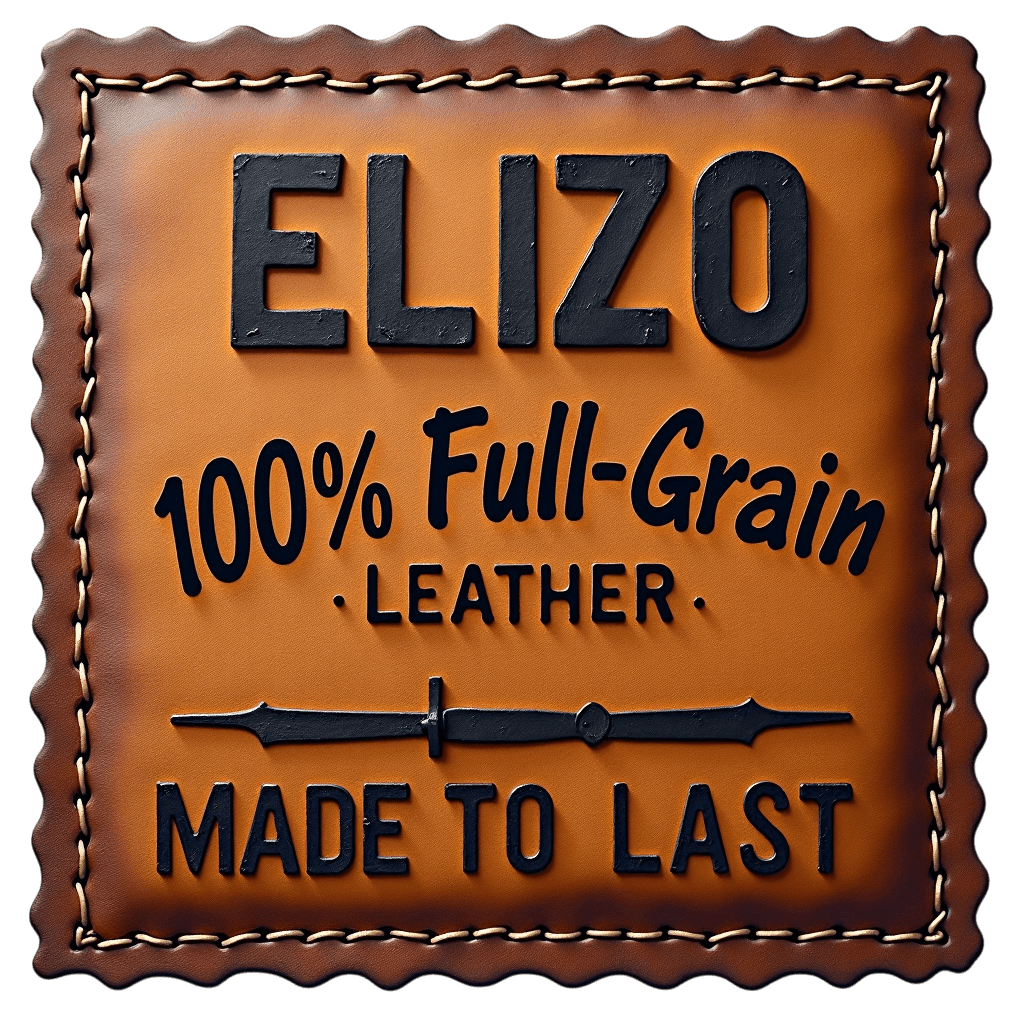Understanding Different Types of Leather Texture
Leather products come in all shapes, colors, sizes, and textures. Easily the most overlooked among all these traits is leather texture.
You rarely consider the texture of a leather product as long as you're okay with its shape, color, and size. But considering a leather product's texture is essential, more so than you think.
This article looks into the many texture types of leather and the various types of leather finishing and appearance that are common in the market. We hope this will help you better understand leather products and make more informed choices for future purchases.
Why Is Leather Texture Important?
But first, you need to know why leather texture is an essential trait in a leather product. A leather's texture is closely related to its quality and authenticity.
Leather texture helps you confirm whether or not a leather product is of high quality. By the feel and look of the surface, you can tell a premium quality genuine grain leather from lower-quality split leather having an embossed artificial coating.
The leather texture is also related to other characteristics like breathability, water resistance, and durability. Patent leather, for example, has a shiny and polished surface that makes it highly water and scratch-resistant. But this texture also makes patent leather less breathable and more prone to cracking.
The quality of a leather product depends a lot on the texture, finishing, and appearance of the leather used. Keep reading to learn more about these types of leather surfaces.
Types Of Leather Textures
Smooth
Smooth leather is sometimes called degrained or buffered leather because it is made by buffing the surface. This process removes the grain appearance and produces a smooth and silky-textured product.
In general, smooth leather has no evident texture and is the typical texture of oil-tanned, vegetable-tanned, and patent leather. One distinct type of smooth leather is flat grain leather which has a visible grain yet has a smooth surface.
Grainy
Grainy leather has a grainy or coarse texture that can be seen and felt. The grain size, shape, and pattern may vary depending on the animal source.
Pebble grain leather is a type of grainy leather having a pebble-like texture. The size of the pebble-like grain can vary from small to large.
Another grainy type is embossed leather, an artificially textured leather. Embossed leather is made by stamping texture on the surface using heat and pressure. Embossing produces unique patterns or exotic animal-like textures on leather.
Pigmented
Pigmented leather has minimal grain, but its coloring gives it a rich and luxurious feel. Colors can be spray-painted or color-coated on the surface. If not adequately conditioned or maintained, pigmented leather can crack or peel easily.
Soft And Fuzzy
Soft and fuzzy leather can be suede or Nubuck. Suede is the soft and nappy layer that remains after splitting off the top grain. Nubuck is a type of top grain leather sanded to have a soft suede-like texture.
Haircell or Hair Cell
Hair cell leather has a distinct texture that is marked by hair holes. Hair cell is a typical texture of leathers from natural pig skin, but buffalo and other animal hides can be embossed with a hair cell leather print.
Embroidered
A decorative way to texture leather is by embroidering it with unique and artistic patterns. Special thread and needles are used for this type of leather texture.
Types Of Leather Finishing
The term 'leather finishing' is often used in place of leather texture, but there is a subtle difference between these terms. Finishing is the final step of leather-making, where a process can highlight or cover the original grain or texture of the leather.
A leather finish can change the feel and look of leather, making it rigid or supple, shiny or matte, etc. The following are the common finishes that manufacturers use and the resulting texture these finishes give to a leather surface.
Aniline Finish
Aniline finishing is the most natural form of finish in leather products. This finish uses soluble dyes that naturally seep into the leather pores, maintaining the leather's original texture and appearance.
Aniline leather can sometimes be confused with pigmented leather, but unlike the latter, aniline leather has no visible coating that covers the natural blemishes and unique texture of the leather. Aniline leather forms the best natural patina over time but can also be prone to scratching, tearing, staining, and other damages.
Semi-Aniline Finish
Similar to the aniline finish, semi-aniline also uses soluble dyes that color the leather without affecting the overall texture and rigidity. The difference between these is that semi-aniline leather contains an additional top coating of a slightly pigmented protective layer.
Semi-aniline finishing can cover major blemishes and imperfections on the leather surface while giving it extra protection against daily wear and tear. The downside is that the extra layer of coating can prevent or delay the formation of a natural patina.
Shine Finish
Shine finishing can vary from matte, which does not have any shine at all, to glossy, which has the highest shine and light-reflective properties. Other shine finishes, like satin or shiny, lie between the matte and glossy types.
A popular type of shine finish is the patent leather finish. Patent leather is a heavily finished leather that has a shiny and plastic-like texture. Patent leather has low flexibility and is sometimes mistaken for fake leather because of its artificial look and feel.
Types Of Leather Appearance
Also related to the texture of leather is its appearance. Leather appearance is the overall look and feel of the leather achieved during processing or tanning. The following are the common leather appearances that manufacturers produce.
Antique
Antique leather is a common look for embellishing vegetable-tanned leather. This type of leather has an aged look and rich patina without undergoing the actual wear and tear that can weaken the leather structure.
Crackled
Crackled leather is a type of pigmented leather in which the pigmented coating is allowed to dry and crack. This process results in tiny cracks that form a textured mosaic-like pattern. This process does not weaken the leather structure, but the cracked coating can be removed over time, especially if it is not coated properly.
Pull-Up
Pull-up leather is not evident until you touch and stretch the leather upon which you see lightening or pulling up of color. This pull-up appearance is a natural characteristic of tanned grain leather and is an indicator of high-quality grain leather and skillful tanning.
Rustic
Rustic leather has a classic leather look that has earthy and natural tones. Most, but not all, rustic leather has a worn-out design. What is common in all rustic leather is the organic, handmade, and minimally processed characteristics that are in line with the old country or Wild West aesthetics.
Weathered
Also called distressed leather, weathered leather is similar to the antique and rustic types but with more signs of textured effects caused by the elements. Weathered leather shows signs discoloration from water, sun, and heat exposure.
Grunge
Grunge leather has a distinct look that shows the original and unique characteristics of the animal hide. Grunge leather shows the uneven texture, color, and other markings like the animal brand, scarrings, or bug bites.
Leather Textures & Quality
You may get confused and overwhelmed by the many choices for leather textures, finishes, and appearances. These differences make leather exciting, interesting, and versatile. Leather textures are also critical indicators of quality, so it helps always to consider them
If you want to learn more about leather, please check out our other articles here (add link to blog) or read about our leather products here (add link to shop).
Please comment below your questions, comments, and suggestions. We'll get back to you as soon as we can.


